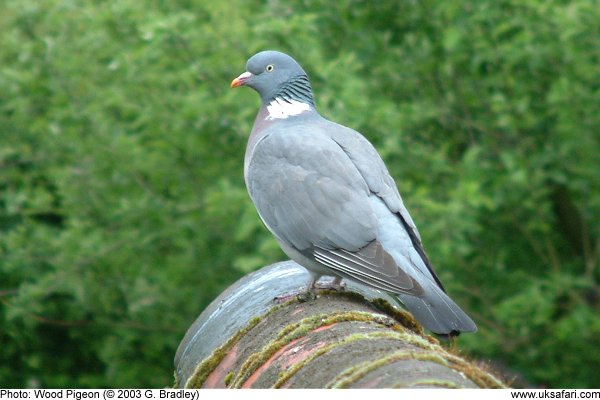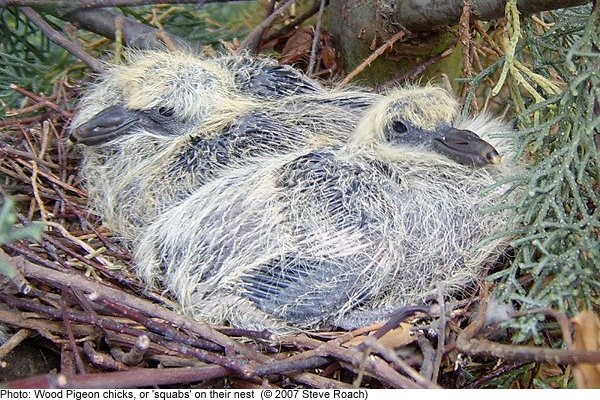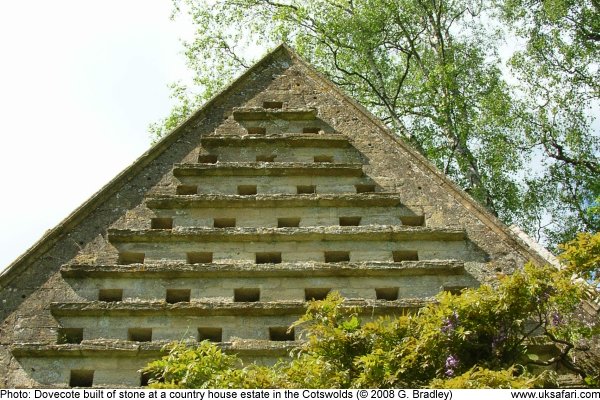 Quick Facts
Quick Facts
Scientific name: Columba palumbus
Size: Approx 42cm long
Distribution: Found throughout the UK
Months seen: All year round
Life Span: Normally 3 to 5 years
Habitat: Woods, parks, gardens and town centres
Food: Seeds and cereal crops. Large winter flocks can cause considerable damage to crops on farmland
Special features: Adult Wood Pigeons can be distinguished from other species of pigeon by the patches of white feathers on the neck, and white stripes on the wings, which is more noticable when in flight. Juvenile birds lack the white patches on the neck.
When disturbed, or displaying wood-pigeons make a loud clapping noise with their wings in flight.
When most birds drink they use their beak like a cup to scoop up water and then throw their heads back to swallow it. Wood-pigeons are different. They use their beak like a straw and literally suck up the water.
Wood Pigeons build a rough nest of twigs, usually in the summer, and lay one or two eggs per brood. The chicks, known as 'squabs', remain on the nest until they are almost as big as their parents. The youngsters look exactly like adult pigeons except they lack the white patches on the sides of their necks.
Squabs used to be a very popular food which could be collected by hand from the nest. Country houses frequently had a dovecote constructed on their property to encourage pigeons to nest and provide meat.
The UK population is estimated at between 5 and 6 million pairs. Wood pigeons have been ringed both here, and on the continent, and no evidence has been found to prove they migrate in large numbers.
Visitor Comment: "In the past, pigeon shooters and farmers would talk about the 'foreigners' arriving in the early autumn. They would say that they were smaller than ours and duller, without the white patches on each side of the neck. These birds are of course newly fledged young."
- Eric Prior
 Related Pages
Related Pages

 Popular Pages
Popular Pages
Amphibians, Bats, Badgers, Beetles, Birds, Birds of Prey, Bumble Bees, Butterflies, Caterpillars, Creepy-Crawlies, Deadly Spiders, Dolphins, Dragonflies, E-Postcards, False Widow Spiders, Free Newsletter, Frogs, Fungi, Garden Spiders, Glow-Worms, Grey Squirrels, Hedgehogs, House Spiders, Ladybirds, Mammals, Marine Mammals, Moths, Owls, Reptiles, Spiders, Toads, Trees, Wildlife Hospitals
© Copyright 2017 G. Bradley - UK Safari | About Us | Links | Contributors


 Wood Pigeons
Wood Pigeons




